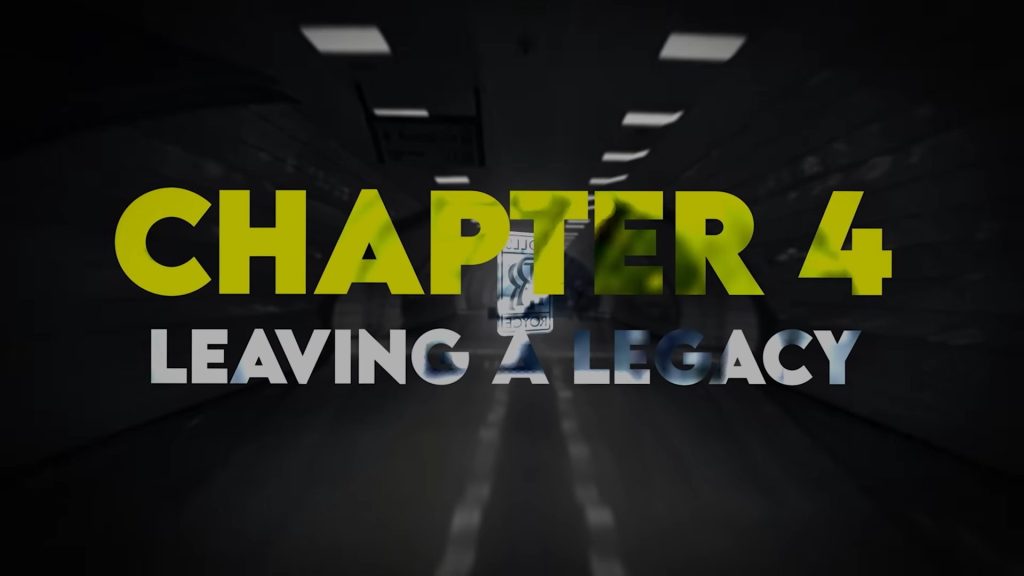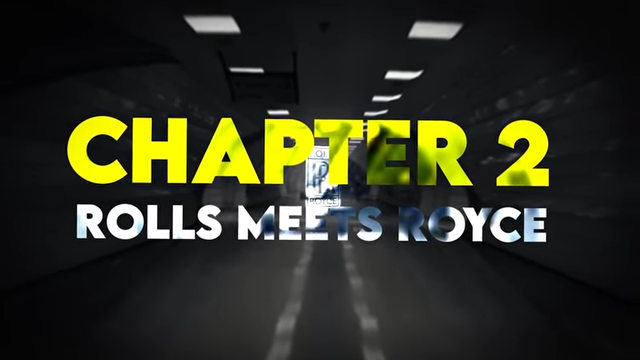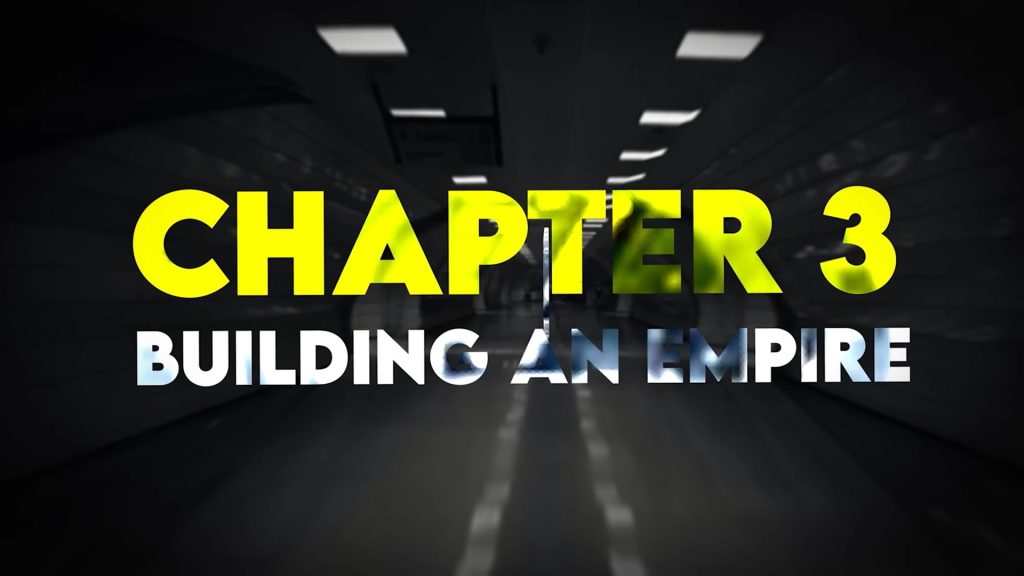Inspiring Story of Henry Royce and Charles Rolls (How They Made $7 Billion Company)
Rolls-Royce makes some of the most expensive cars in the world. And yet this $7 billion company was founded by a boy who grew up in poverty with almost no education.
Ch-1. Rags To Riches

Henry Royce started his first million-dollar company with just £20. So, how did he do it? Henry Royce was born in 1863. His parents, James and Mary, ran a flour mill. Unfortunately, the family business was struggling; by 1867, they went bankrupt.
This forced the Royce family to move to London to look for work. Even though he was just four years old, Henry began working his first job scaring birds on a farm, making just a few cents a week.
His father went on to work for another flour mill, but he was still in a massive amount of debt. Things were bleak for the family, and then just when it seemed like it couldn’t get much worse, tragedy stuck. When he was only 9 years old, Henry’s father died. This was devastating, and the family’s financial struggles only worsened.
And so, instead of going to school, Henry worked full-time. He sold newspapers and delivered telegrams for the post office, making the equivalent of just a few cents for every delivery. However, Henry’s mother was still in debt and realized she could no longer support her children. So she sent Henry to live with an elderly couple instead – although they barely made ends meet themselves.
There were many days when all Henry had to eat was a piece of bread soaked in milk. As a child, this malnutrition and hard labor contributed to his health problems for the rest of his life.
By the time he was 15 years old, Henry had only completed one year of school. So his aunt tried to help with his education by giving him a small fee to join an apprenticeship program with the Great Northern Railway Company.
This meant Henry had to relocate again while his aunt managed to cover the fee for the apprenticeship scheme. She couldn’t afford to pay for his housing – but luckily, Henry managed to move in with a man named George Yarrow, whose son was also an apprentice for the railway company.
At night, George tutored the two boys on how to use tools. Henry found this fascinating and spent many hours practicing, and despite being just a teenager, he was soon regularly building beautifully made brass model wheelbarrows in the Yarrow’s garden shed.
Henry may not have had much of an education, but he was skilled with his hands and had an incredible work ethic.
Unfortunately, the money from his aunt only lasted for three years of his apprenticeship before he had to drop out again.
So, at 17 years old, Henry began working with a tool-making company in Leeds, making just one penny per hour.
Then he moved on to the Electric Light and Power Company in Liverpool. He worked harder and longer than his co-workers, often skipping meals instead of tinkering with electronics.
After working these jobs and saving up whatever he could, he could finally afford to take electrical engineering classes at night at the City and Guilds Institute.
The skills he learned from these classes meant that by 19 years old, he could get the best job of his life, working as Chief Electrician for the Maxim-Weston Electric company.
Henry felt like he was finally making progress. However, in 1884, the company tanked, and Henry was left unemployed yet again.
It seemed as though no matter how hard he tried, he could never catch a break. But this time, Henry decided to start his own company instead of looking for another new job at a different company.
Even though he came from such humble beginnings, Henry felt there had to be more to life than this – and so he decided he’d try to become rich and start his own business.
Of course, he knew he needed some help, so he tried to convince his co-workers to join him. His friend Ernest Claremont agreed to take the risk. He was also an engineer, and together they began a new business called F.H. Royce and Company in 1884.
Henry only had £20 then, while Ernest had £50. But they pooled what little savings they had and went into business together – beginning by making electric fittings.
They rented a building on 1a Cooke Street in Manchester and lived in a single room above the shop. The two could barely afford to eat, so they made sandwiches daily. The odds of two young men succeeding like this were slim to none.
But instead of giving in to self-doubt, Henry did what he’d always done and worked harder than the rest. He ensured the product was better than the competition with everything he did. Finally, after lots of testing, they created their first successful product- the electric doorbell.
These began to sell quickly, and Henry was known to work long nights at his desk to make more of them for his customers. Using their money, Henry could begin creating more ambitious, more extensive products, like generators and an electric crane.
Every year they were in business, they created more products to sell, and their profits grew.
In 1897, the orders in hand amounted to £6,000. Twelve months later, orders amounted to £20,000. By 1899, the company’s share capital was £30,000. That may not sound like a lot, but remember; this is the 1800s – after modern-day inflation, that equates to over a million dollars.
However, despite this success, Henry was already setting his sights on something even more ambitious: to create the most luxurious car in the world.
But first, Henry had another matter to attend to. Now that Henry and Ernest were wealthy from their first business, they finally felt they could focus more on their personal lives. The two friends were so close that they married a pair of sisters- Edith and Minnie Punt.
So although they’d been business partners, Henry and Ernest were now officially family. The success of their first company making electrical goods, also meant they were finally established enough that Henry could get even more ambitious with his mechanical projects.
Now at the time, very few people owned cars. But Henry Royce was one of the first to get a keen interest in automobiles and purchased a used 1901 two-cylinder French car.
Unfortunately, It was in the such terrible condition it wouldn’t even start. But by the next day, Henry had it working again. And instead of stopping there, he continually improved all the faults he found with it.
Eventually, Henry decided rather than improving this car, and he should build his own, and in 1904 he custom-built three cars, which were given the model name Royce 10. The first car was for himself.
The second was given to his business partner, Ernest. But the third was sold to a man so impressed by the vehicle that he introduced Henry to a car dealer named Charles Rolls.
When Charles Rolls met Henry Royce, surely neither of them could have possibly imagined the journey they were about to embark on together.
Ch-2. Rolls Meets Royce

No one would have ever expected Charles Rolls and Henry Royce to become business partners. Henry was a true rags-to-riches story, but his partner Charles was the polar opposite, having practically everything handed to him from an early age. However, both of them shared a true passion for cars. And this partnership would lead to the iconic Rolls-Royce brand.
Charles Rolls was born in 1877 to the 1st Baron and Lady Llangattock. Even from a young age, Charles was always tinkering with mechanical objects, earning him the nickname “Dirty Rolls” from his friends.
He attended the prestigious Cambridge University for mechanical and applied science. And after graduation, he worked on a yacht before moving on to work for the London and North Western Railway. Charles was also one of the very first people in the UK to own a car.
There’s even a photo of him from 1896 in his Peugeot Phaeton, which he bought in Paris at just 18 years old. He loved cars so much that his father gave him the money to open a car dealership. This was called C. S. Rolls & Co., and he began importing French cars to sell to English customers.
Charles Rolls had earned himself quite a reputation in the motorhead community. He held the unofficial land speed record of driving 83 miles per hour.
Maybe that doesn’t sound impressive by today’s standards, but back then, it was swift. Charles was known as a bit of a daredevil.
In 1903, Charles competed in the Paris to Madrid town-to-town, where thirty-four drivers and spectators died.
This mainly happened because the cars kicked up so much dirt on the roads that no one could see. And people from the audience would step out in the street to get a better look at the cars and get run over.
But Charles thrived in the chaos, and continued racing year after year, regardless of how dangerous the races were. Not only was Charles a massive fan of driving fast cars, but he was also an aviator.
He made over 170 flights in a hot air balloon and became the second person in Great Britain to own a pilot’s license.
He would fly over 200 flights in a Wright Flyer aircraft. So clearly, Charles had had a very different upbringing to Henry, and Charles undoubtedly had a taste for luxury. However, When Charles Rolls first met Henry Royce, he hesitated.
He was a big fan of three and four-cylinder cars, so he wasn’t sure how he could like a 2-cylinder vehicle like the one made by Henry.
But after trying out Henry’s car, Charles was so impressed by the quality of the Royce 10 he said it was clear that they needed to work together.
That evening, Charles drove back to London in a borrowed Royce car. In the middle of the night, he woke up his business partner and excitedly told him, “I just found the most excellent motor engineer in the world.”
Ch-3. Building An Empire

In December 1904, Charles Rolls and Henry Royce officially created the joint business Rolls-Royce. These two men couldn’t be more different. Henry was born in poverty and worked for everything he had. At the same time, Charles was young and had everything handed to him. There was also a significant age gap between them. Charles was just 27 years old, and Henry was 41.
But each brought a lot to the partnership. Henry had many years of experience building electronics and mechanical objects to perfection. And Charles was more than just a lover of fast cars. He was an incredible businessman who knew how to harness the power of marketing and public relations.
Charles used his connections in the upper class to his advantage. He exploited his ties in politics, media, and even royalty to find customers who could afford to buy their luxury cars.
So the two of these together were a perfect pairing, as they each brought perfectly complementary skills the others didn’t have. They were both masters of their craft, and as a duo, they were unstoppable.
In 1904, they presented their first vehicle, the Rolls-Royce 10 hp, at The Paris Salon, which would later be called the Paris Motor Show.
They sold the car at Charles’ car dealership for £395 each. With current inflation, that’d be the equivalent of tens of thousands of dollars. They made only 16 of these cars; if you can find one today, it’s worth a fortune. One was sold at auction for £3.2 million in 2007.
Their second vehicle to be sent to market was in 1906: the Rolls-Royce Silver Ghost. All of the metal parts were coated in silver and aluminum. After completing a 15,000-mile endurance run, they pulled a publicity stunt to shock audiences: They placed a cup of water on the running engine.
It was such a quiet engine that it didn’t spill a single drop of liquid. At the time, it was dubbed the ‘best car in the world.’ And as of today, the Silver Ghost is still considered one of the most valuable cars -in 2005, one owner had his insured for 35 million dollars.
Once they were fully established in automobiles and making headlines for their prestigious and luxurious cars, Charles tried to convince Henry to make an airplane engine since Charles’ other passion was flying. But Henry refused, saying that he would instead focus on cars.
Still, with the company’s growing success, Charles could devote more time to flying – he eventually resigned from his position as the Technical Director at Rolls-Royce to focus solely on planes. Charles said he preferred flying over driving since “there are no policemen in the air.”
In 1909, He bought his own Wright Flyer aircraft, and one year later, he set the record as the first person in the world to make a non-stop flight across the English Channel and back. The newspapers dubbed him ‘the greatest hero of the day’. Sadly, that wasn’t the only record Charles set.
Charles flew on a day with a mighty wind during an air show. He was pushing the plane to its limits, and when he tried to land, the aircraft began to fall apart.
Charles Rolls went down in history as the first Briton to die in a plane crash in 1910. He was just 32 years old. One year later, Henry Royce’s health declined after losing his business partner.
His years of poor eating and lack of sleep were catching up to him. He could no longer spend his days working in the Rolls-Royce factory and began spending more time at home. Despite his poor health, Henry Royce continued to work hard, even if it meant sketching design ideas from his bedside.
ch-4. Leaving A Legacy

Even though Henry had refused to make airplane engines for years, he was forced to make them at the beginning of World War I.
In 1914, they manufactured the Rolls-Royce Eagle Engine, which provided half of the total horsepower for all Allied planes.
This was the beginning of Rolls-Royce’s legacy regarding plane engines. And with their cars, by 1921, there was such a massive demand for them that there was a 3-year backlog. So they opened a new American Rolls-Royce factory in Springfield, Massachusetts.
Within 10 years, they had produced 2,944 cars. If that doesn’t seem like a lot, Rolls-Royce prides itself on producing the highest quality vehicles- even if it takes much more time.
The same is true even today. Everything is still made by hand, and it can take up to 6 months to complete one vehicle.
In 1930, Henry Royce was awarded the Order of the British Empire and was knighted as a Baronet. Just three years later, he died at the age of 70.
No matter how ill he felt, he never stopped working. His last drawings were made on his deathbed. The night before he died, he sketched an adjustable shock absorber on the back of an envelope and asked his nurse to send it to the workers at the factory to produce his invention.
He died before the letter could be delivered. Both of these men left behind a legacy that far outlived them.
Rolls-Royce continued to make vehicles long after their deaths; even today, the name is still synonymous with luxury.
And the company’s most recent valuation was over 7 billion dollars. If we can learn anything from the Rolls-Royce story, it’s that no matter where you come from or how bleak your starting point in life, with enough hard work and determination, you can build something incredible and transform the direction of your life.
In the words of Henry Royce, “Strive for perfection. Take the best that exists and make it better. If it doesn’t exist, create it.”
And this attitude is very similar to the man who created Lamborghini. He was never happy with the cars he tested, so just like Henry, he decided to build his car instead. However, the difference with the Lamborghini story is that his motivation to build a car was revenge on Enzo Ferrari.







